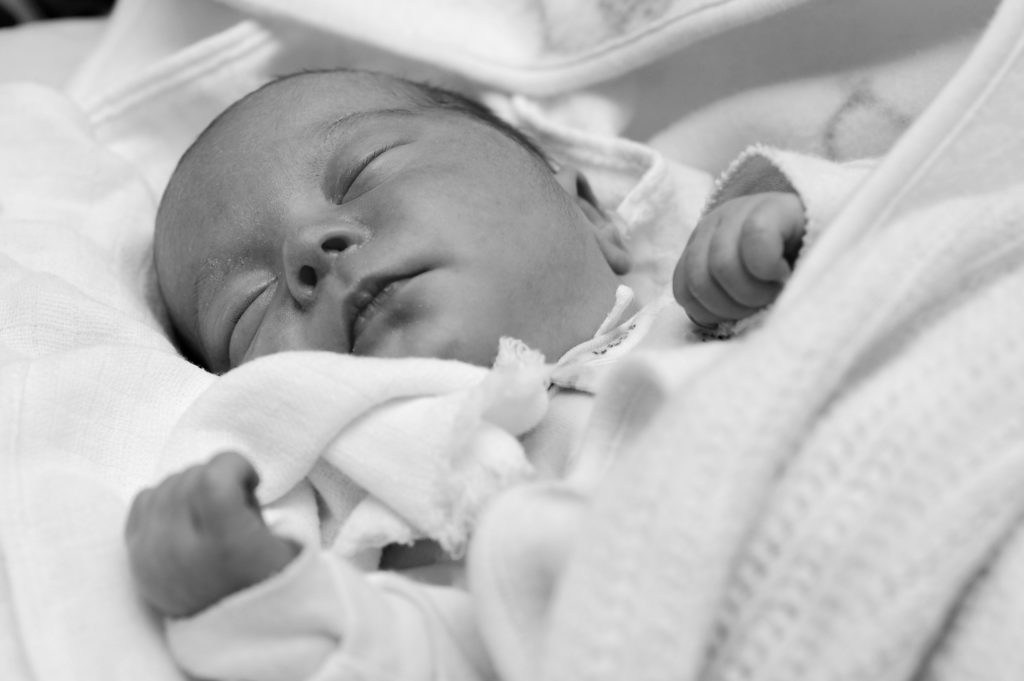Risk Stratification in Infants With Primary Pulmonary Vein Stenosis
Risk Stratification in Infants With Primary Pulmonary Vein Stenosis https://pediatricsnationwide.org/wp-content/uploads/2021/01/89925896-1-1024x681.jpg 1024 681 Mary Bates, PhD Mary Bates, PhD https://secure.gravatar.com/avatar/c6233ca2b7754ab7c4c820e14eb518c8?s=96&d=mm&r=g- January 06, 2021
- Mary Bates, PhD

Categorizing infants with pulmonary vein stenosis into stable and progressive groups could help inform treatment.
Primary pulmonary vein stenosis is a rare, often lethal, cardiac disease. It is challenging to treat, as the disease can be progressive in some patients but not others. In a new study, researchers from Nationwide Children’s describe outcomes among preterm infants diagnosed with single-vessel primary pulmonary vein stenosis initially treated using conservative management. The study adds to our understanding of the natural history of this disease process and could help future efforts at risk stratification, wherein more targeted, individualized therapies could be applied.
The researchers retrospectively examined 20 cases of single-vessel primary pulmonary vein stenosis among preterm infants treated at Nationwide Children’s between 2009 and 2019.
“We found that it might be possible to group premature infants as having either stable or progressive pulmonary vein stenosis (defined as worsening stenosis in the affected vein or stenosis spreading to other pulmonary veins), which could be used to inform their treatment in the future,” says Eli Zettler, a clinical research assistant in the Center for Perinatal Research at the Abigail Wexner Research Institute of Nationwide Children’s and the study’s first author.
“This study shows that there is potentially a subset of premature primary pulmonary vein stenosis patients whose disease is stable and who could be followed closely without the need for emergent treatment,” Zettler says.
While the outcomes among the group of infants with stable disease are encouraging, Zettler and his colleagues say that conclusions on the optimal treatment among premature infants with single-vessel primary pulmonary vein stenosis remain unanswered.
“This study helps validate our current medical protocol in this vulnerable patient population, where we identify patients with primary pulmonary vein stenosis and closely monitor them using noninvasive imaging,” says Brian Boe, MD, a congenital interventional cardiologist at Nationwide Children’s and one of the study’s authors.
“As patients develop progression of their disease, then we talk to the families about taking a more aggressive therapeutic approach.”
Evidence on the natural history of premature infants with primary pulmonary vein stenosis is limited by the rarity of the disease. Zettler points out that over the 10-year period that this study examined, only 20 patients that met the criteria.
“With this study, we want to provide a foundation for future research and larger projects where we might be able to follow the outcomes of more patients with stable and progressive disease after either conservative or procedural treatment,” he says.
Dr. Boe agrees that larger studies are needed to define subgroups of infants and identify best practices.
“Due to the rarity of this disease, it will be through multicenter collaborations that we will better understand how best to treat these patients,” he says. “Throughout the last few years, there have been more collaborations among heart centers around the world to combine resources for these patients.”
Dr. Boe, who is also an assistant professor of pediatrics at The Ohio State University College of Medicine, says that even in the last five years, the team at Nationwide Children’s have made modifications and improvements in their therapeutic management for patients with pulmonary vein stenosis.
“There are now more options for the treatment of infants with primary pulmonary vein stenosis,” he says. “Many of these options are minimally invasive and can complement the surgical operations we use to help treat these patients.”
Reference:
Zettler E, Rivera BK, Stiver C, Boe B, Cua C, Ball MK, Smith CV, Slaughter JL, Chen B, Callahan R, Backes CH. Primary pulmonary vein stenosis among premature infants with single-vessel disease. Journal of Perinatology. 2020. https://doi.org/10.1038/s41372-020-00830-9.
Image credit: Nationwide Children’s
About the author
Mary a freelance science writer and blogger based in Boston. Her favorite topics include biology, psychology, neuroscience, ecology, and animal behavior. She has a BA in Biology-Psychology with a minor in English from Skidmore College in Saratoga Springs, NY, and a PhD from Brown University, where she researched bat echolocation and bullfrog chorusing.
-
Mary Bates, PhDhttps://pediatricsnationwide.org/author/mary-bates-phd/December 27, 2016
-
Mary Bates, PhDhttps://pediatricsnationwide.org/author/mary-bates-phd/
-
Mary Bates, PhDhttps://pediatricsnationwide.org/author/mary-bates-phd/
-
Mary Bates, PhDhttps://pediatricsnationwide.org/author/mary-bates-phd/






